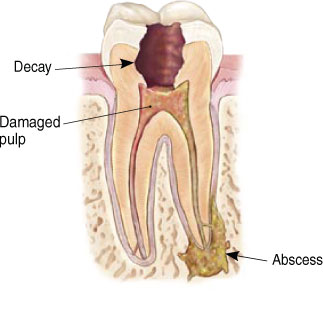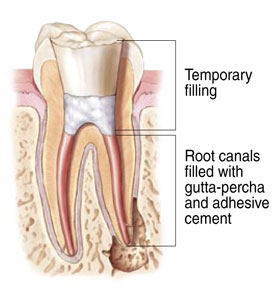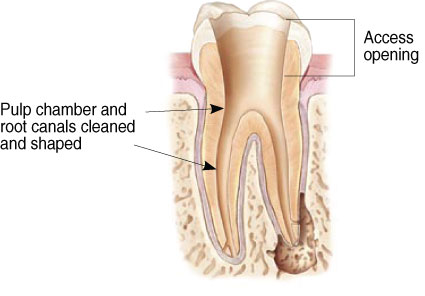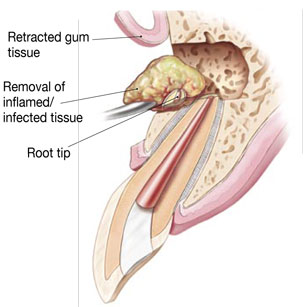The most common procedure we perform in our office is the nonsurgical root canal, often referred to as a root canal.
You may require a root canal after the nerve inside the tooth has become irritated and sensitive to hot and cold foods. Other times a tooth can crack or chip, leading to a situation where the nerve becomes inflamed. In extreme circumstances, the nerve of the tooth may die, leading to pain when chewing, and even swellings in the mouth or cheek.
During a root canal, we anesthetize your tooth, remove the nerve tissue, disinfect the space and then seal it. All of this is done under the microscope in an effort to be as accurate as possible.



